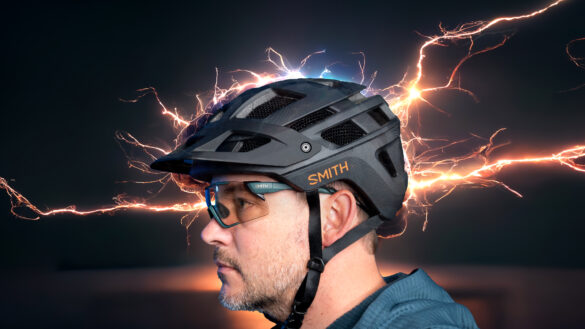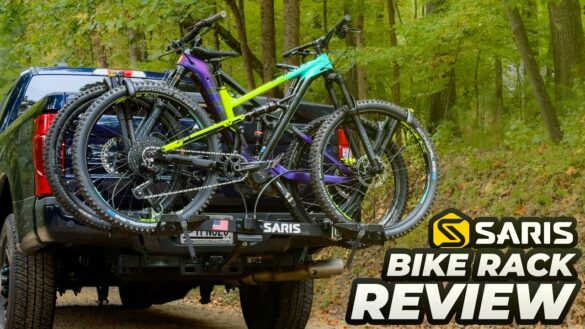The guys over at Rocky Mountain Bikes sent me a really cool promo on their new 29er mountain bikes…the Vertex and Altitude. Here is everything they had to say about this new lineup. Warning…this is an overload of content and marketing…its all good though…who does not like to read about bikes? But just remember…everything from this point forward is courtesy of Rocky Mountain Bikes and are not the words, thoughts, miscellaneous ramblings of Mountain Biking by 198.
I do not get releases this in depth that often and that is my reason for sharing this today. They also provided close up pics that you can stare at for awhile!
29 AT TWENTY-NINE…
Rocky Mountain has been making 26 inch wheeled mountain bikes since 1981, and our mission has always been to put ride quality first. No gimmicks. We’ve never been a company to immediately latch on to new trends, always making sure we do our research first. When we launch a platform, we launch it right. On the eve of our 29th birthday (2010), we thought it would be fitting to launch our 29er platforms.
The notoriously technical trails in our Vancouver backyard have always been our testing grounds and we’ve used these same trails to develop our 29ers. Our new 29ers are just as suited to the technical trails at our doorstep as they are the fast, flowy Marin County singletrack, or high alpine Swiss mountain passes. 29ers make sense and now they make sense in all kinds of terrain.
Rocky Mountain Vertex 29er
INTRODUCTION
 Rocky Mountain’s extensive World Cup racing heritage is immediately apparent in our new Vertex 29 platform. Much of the R&D for our Vertex RSL was applied to the Vertex 29, resulting in a bike that handles like a race bike, but also showcases the best of the 29er experience.
Rocky Mountain’s extensive World Cup racing heritage is immediately apparent in our new Vertex 29 platform. Much of the R&D for our Vertex RSL was applied to the Vertex 29, resulting in a bike that handles like a race bike, but also showcases the best of the 29er experience.
For 2010 we used the introduction of Vertex 29 to give all of our 7005 aluminum Vertex frames a facelift. While maintaining our proven geometry, we’ve adopted new technologies and tubesets to keep the Vertex on top.
Most noticeable on Vertex 29 is our new custom shaped FORM29™ tubing. This tubeset was developed by Rocky Mountain for the Vertex 29 project and it has allowed us to minimize weight while increasing stiffness and fatigue strength.
- Oversized tubing. All tubes are larger diameter than our prior Vertex frames for increased stiffness without the weight penalty.
- Tapered head tube. Larger frames tend to be flexy at the front end. By using a tapered head tube ( 1-1/8” at the top and 1-1/2” at the bottom) we are able to make the front end of the Vertex 29 stiffer and stronger. The tapered head tube allows for a wider down tube at the head tube joint which helps to laterally stiffen the front end of the frame without increasing the tube thickness.
- Smart shapes. The top tube and the down tube have wide flat surfaces to increase strength in the principal stress areas and also to have a smooth joint at the top and bottom to improve the fatigue strength. Once the basic design was set, the tubes are optimized through numerous iterations, to distribute material in the areas where they need it, and thin out other sections as much as possible.
- S-Bend seatstays. Help absorb small frequency vibrations before they reach the rider, reducing muscle fatigue.
- Custom seatstay tubing. Starts as circular at the seat tube, then flares to rectangular at the dropout. Circular shaped tubes are best when strength is required in all planes and rectangular tube shapes at dropout optimize fatigue strength.
- Larger diameter seat tube. Accepts a 30.9 seatpost, with an innovative flare at the bottom for ultimate pedaling stiffness.
NEW TECHNOLOGIES
Every weld, wall thickness, and tubing shape on the Vertex 29 was examined and tweaked to perfection, but our attention to detail doesn’t end there.
The Vertex 29 marks Rocky Mountain’s adoption of several new technologies which truly set it apart from the competition. These features include:
- Shimano Direct Mount front derailleur system. Adopting Shimano’s new front derailleur mounting system has allowed us to manipulate the shape of our tubeset without having the constraints of a typical band-clamp design. We flared the bottom of the seat and down tube extra wide to achieve the most laterally stiff bottom bracket possible. The Direct Mount design also guarantees perfect derailleur alignment while still allowing for vertical adjustment.
- Shimano BB92 press fit bottom bracket system. The BB92 system is a wider BB shell with a larger diameter and consequently the top and down tubes can be larger diameter where they meet the BB for greater stiffness. The chainstay spacing at the bb can be wider for again, more lateral stiffness. BB92 allows for frame optimization (as opposed to component) and offers a wide cross section of compatibility.
- Tapered ZeroStack head tube. Lowers front end, as well as increases front end stiffness thanks to a large interface at the headtube.
- New custom dropouts. Designed to reduce stress risers for greater fatigue strength. Our new dropouts have a large angled, flat surface for the best possible weld strength at seatstays and chainstays.
DESIGN + VERSATILITY
We know that our Vertex 29 bikes will be used for everything from pro racing to loaded off road touring, so we made sure to make the frame as versatile as possible. We did this with:
- 4 sizes: M, L, XL, XXL. More sizes means a more precise fit for our riders, in our proven ST3™ 29er geometry
- Short chainstays. Minimizes wheelbase, improving climbing performance and making for a quick handling ride.
- Headtube. Accommodates a tapered or conventional 1-1/8” steerer.
- 3 water bottle mounts
- Rear rack mounts
Rocky Mountain Altitude 29er
INTRODUCTION
 Our new Altitude 29 puts a big wheel spin on our phenomenally successful Altitude platform. With our patented SmoothLink™ suspension and first-of-its-kind StraightUp™ geometry, we have leapfrogged the competition and have set the standard for pedaling efficiency and suspension quality. Altitude 29, with its 120mm of rear wheel travel, is about covering big distances efficiently while having enough suspension to soak up anything in its way.
Our new Altitude 29 puts a big wheel spin on our phenomenally successful Altitude platform. With our patented SmoothLink™ suspension and first-of-its-kind StraightUp™ geometry, we have leapfrogged the competition and have set the standard for pedaling efficiency and suspension quality. Altitude 29, with its 120mm of rear wheel travel, is about covering big distances efficiently while having enough suspension to soak up anything in its way.
Similar to Vertex 29, our custom drawn FORM™ tubeset of the Altitude 29 immediately stands out. From material, butt lengths, wall thicknesses, and heat treating, all tubing found on the Altitude 29 is custom made for our needs. The tubeset is drawn from 7005 alloy, and then cold worked into the desired shapes.
FORM29™ TUBESET
- Seat tube. A special project in itself. It is not only hydroformed to achieve the desired shape, but also butted. By bulging the centre section, we eliminated the need to weld on a rocker mount, opting instead for a stronger piercing for the oversized pivots. Finally, we shaped and flattened the seat tube to allow for tire clearance with a 29” x 2.3” tire.
- Down tube. Shape allows the shock to sit as low as possible in the frame. At the same time, we felt the need to create enough room for not only a water bottle, but also a shock reservoir should the rider choose to install one.
- Open Headtube™. Patented design for stiffer, lighter headtube junction. This design means that both tubes are mitred to meet each other at the headtube junction rather than just one, creating a large, open box section. This removes unnecessary material while maintaining exceptional stiffness.
STRAIGHT UP GEOMETRY – AN INDUSTRY FIRST IN THE CATEGORY
One of the key features of the Altitude 29 that sets it apart from the competition is its revolutionary StraightUp™ geometry, which is based around a 76 degree static seat tube angle. Road bikes are typically designed around a 75 degree seat tube angle, which places the riders’ hips in the optimal position over the bottom bracket, thus maximizing the amount of power output possible from the human machine. No one has seriously attempted to do something similar in mountain bikes, until now.
Static seat angle is 76°, sags to 74.5°
The steep seat tube angle on the Altitude 29 is designed to compensate for differences in suspension sag between the front and the rear suspension, where the rear shock typically sags more than the front forks when both are correctly set up. While climbing, this effect is exaggerated, and the rear suspension tends to sag even more than on flat ground, because the riders mass is cantilevered a greater distance over the rear wheel. It’s important to recognize that we have not shortened the top tube length by making the seat tube angle steeper – we’ve simply moved the front center forward, putting more weight on the front wheel while seated.
Bio mechanically powerful and comfortable position while seated.
When pedalling uphill, a full suspension bike whose seat tube angle is 74.5 degrees (or less) will sag to about 72 degrees (or less), which can be an uncomfortable position to ride in. To compensate, many riders sit on the nose of their saddle, in essence making the seat tube angle of their bike steeper, and thus weighting the front wheel in order to keep it in contact with the ground. StraightUp™ geometry actually harnesses the riders ½ horsepower available in his/her legs, allowing the rider to always sit right in the sweet spot of the saddle.
Gets saddle out of the way for descending.
When descending, the rider stands up and automatically re-orients his or her weight based solely on the wheel base length, chainstay length, front-center and head tube angle (seat angle is irrelevant for descending when not seated). As well, since the seat tube is steeper, the saddle is further away from the rider and therefore even easier to get behind on descents.
SMOOTHLINK™ SUSPENSION
SmoothLink™ is an extension of our Energy Transfer System (ETS™) patent. This new suspension configuration is defined by the ETSX patent (US 6,843,494). As well, there are additional patents pending which pertain to the manipulation of the rearward pivot, which utilizes a novel step-down drive-side clevis: it allows the lower drive-side stay member to avoid contact with the chain at all times.
The ETS™ patent stipulates that a line drawn through the main pivot and the rearward clevis pivot is above the rear axle at all points of travel. This is the key differentiator between SmoothLink™ and Horst Link suspension systems. The lower linkage member is parallel to the Average Chain Torque Line (ACTL), at all points of travel, whereas a Horst Link is defined by a more acute angle between the lower link and ACTL.
Keeping the lower link parallel to the ACTL allows the Instantaneous Center of Rotation (ICR) to follow very closely the ACTL, thus virtually eliminating pedal induced suspension bob. NOTE: the ICR never crosses the ACTL at any point in travel, as this would be considered “tracking” as defined by a competing patent.
Minimal chain growth creates fully active system.
The chain growth has been reduced by half (only 7mm through 120mm of travel) in order to create a more active suspension feel, while still maintaining the traction and forward drive created by the ETS™ effect. It is ideal to have the rear wheel trajectory shape be as close to a circle as possible, as any deviation from a perfectly circular path will introduce an irregular rate of change between the bottom bracket and the rear axle as the rear wheel compresses. Should the Chain Stay Length (CSL) grow at such an irregular rate, the bike would be more difficult to control when the rear wheel is weighted.
Flatter suspension rate creates bottomless feel.
The Altitude has a more level Instantaneous Suspension Rate Curve than its predecessor. This flatter curve will allow the suspension a greater degree of movement through the travel than the ETS-X, thus producing a more “bottomless” feel. Also, less air pressure will be required in the Altitude shock absorber than the ETS-X because of the higher initial rate value.
Caliper mounting position reduces Brake Jack.
By removing the braking forces from the lower linkage, they are isolated and do not act on the suspension system, thereby greatly reducing “brake jack”, or the stiffening of the suspension under braking.
ADDITIONAL FEATURES
- Low COG. Altitude Suspension design lowers center of gravity by keeping all suspension linkages and shock low, a very important feature on a 29er as they can be characteristically cumbersome. The low center of gravity makes the bike more manoeuvrable and more stable.
- Increased Standover. Bent top tube increases standover by 50mm. This helps accommodate smaller riders who may otherwise not be able to fit 29er suspension bikes.
- Short headtubes. Lowers handlebar height. Getting the front end low enough is difficult on some 29ers, not so with Altitude.





